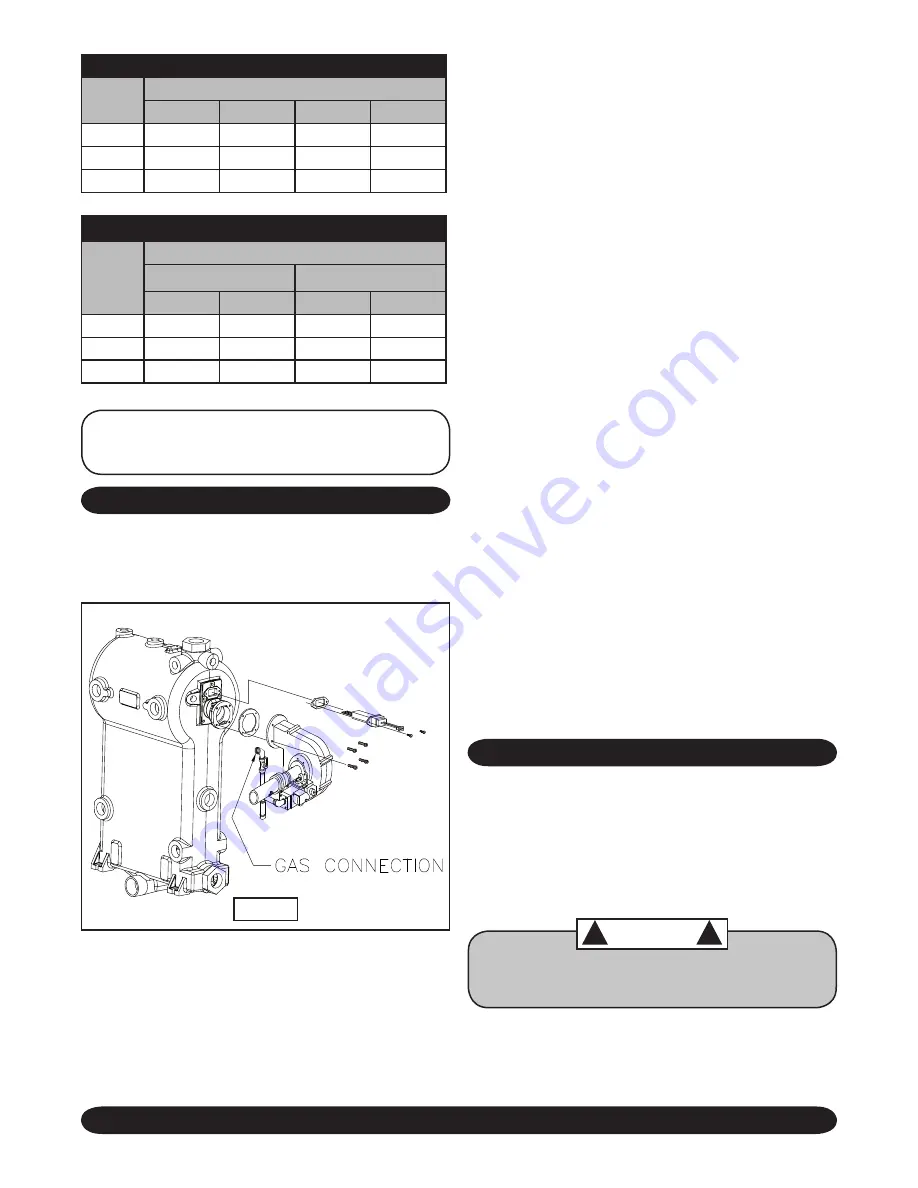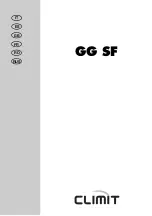
14
!
!
GAS PIPING
Figure 12
TABLE 6 - NATURAL GAS PIPING SIZES
Pipe
Length
Pipe Capacity - BTU/Hr. Input
(1)
½”
¾”
1”
1¼”
20’
92,000
190,000
350,000
625,000
40’
63,000
130,000
245,000
445,000
60’
50,000
105,000
195,000
365,000
TABLE 6 - PROPANE GAS PIPING SIZES
Pipe
Length
Pipe Capacity - BTU/Hr. Input
(1)
Copper Tubing
(2)
Iron Pipe
⅝”
¾”
½”
¾”
20’
131,000
216,000
189,000
393,000
40’
90,000
145,000
129,000
267,000
60’
72,000
121,000
103,000
217,000
(1)
Includes Fittings
(2)
Outside Diameter
IMPORTANT:
The length of pipe or tubing should
be measured from the gas meter or propane sec-
ond stage regulator.
CONNECTING THE GAS PIPING
Refer to Figure 12 for the general layout at the boil-
er. The gas line enters the boiler through the left
side panel.
The boiler is equipped with a ½” NPT connection on
the gas valve for supply piping and ½” NPT ball cock
for manual shut off. The following rules apply:
1. Use only those piping materials and joining
methods listed as acceptable by the authority
having jurisdiction, or in the absence of such
requirements, by the National Fuel Gas Code,
ANSI Z223.1- latest revision. In Canada, follow
the CAN/CGA B149.1 and .2 Installation Codes
for Gas Burning Appliances and Equipment.
2. Use pipe joint compound suitable for liquefied
petroleum gas on male threads only.
3. Use ground joint unions.
4. Install a sediment trap upstream of gas con-
trols.
5. Use two pipe wrenches when making the con-
nection to the gas valve to keep it from turning.
6. Install a manual shutoff valve in the vertical
pipe about 5 feet above floor outside the boiler
jacket.
7. Tighten all joints securely.
8. Propane gas connections should only be
made by a licensed propane installer.
9. Two stage regulation should be used by the
propane installer.
10. Propane gas piping should be checked out
by the propane installer.
11. It is recomended to use a ½” union suitable
for natural and propane gas after the ball cock to
facilitate service on the unit.
CHECKING THE GAS PIPING
After all connection have been made, check imme-
diately for leaks. Open the manual shutoff valve.
Test for leaks by applying soap suds (or a liquid
detergent) to each joint. Bubbles forming indicate
leak.
CORRECT EVEN THE SMALLEST LEAK
AT ONCE.
WARNING
Never use a match or open flame to test for
leaks.















































